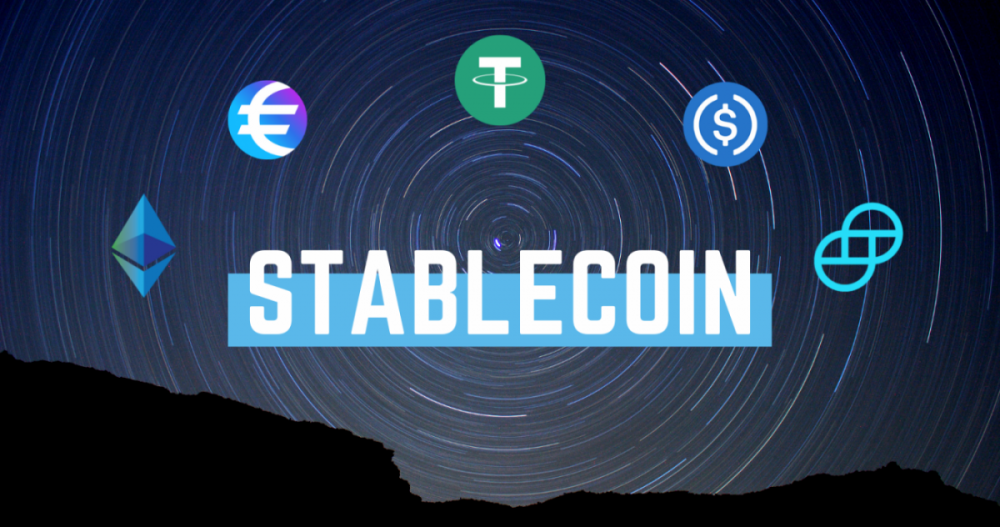What Are the Challenges in Stablecoin Development Solutions and How to Overcome Them?
 Albert Peter
Albert Peter
Stablecoins have emerged as one of the most promising innovations in the cryptocurrency space, designed to offer the stability of traditional fiat currencies with the benefits of blockchain technology. By maintaining a stable value, these digital assets aim to mitigate the inherent volatility associated with cryptocurrencies. However, despite their potential, stablecoin development faces several significant challenges. In this blog, we will explore these challenges in detail and discuss strategies to overcome them.
1. Regulatory Compliance
- Challenge: Regulatory compliance is arguably the most significant challenge facing stablecoin development. Different jurisdictions have varying requirements regarding the issuance and operation of stablecoins, often leading to a complex and fragmented regulatory environment. Regulatory authorities are concerned with issues like money laundering, financial stability, consumer protection, and the potential for financial system disruptions.
- Solution: To address regulatory challenges, stablecoin developers should proactively engage with regulators and seek legal advice to ensure compliance with local and international regulations. Establishing clear, transparent governance frameworks and adhering to best practices in anti-money laundering (AML) and know-your-customer (KYC) procedures can also help mitigate regulatory risks. Additionally, staying informed about regulatory developments and participating in industry dialogues can assist in shaping favorable regulations.
2. Collateral Management
- Challenge: Stablecoins typically rely on collateral to maintain their value stability. This collateral can be in the form of fiat currencies, cryptocurrencies, or other assets. Managing this collateral effectively is crucial to ensure that the stablecoin remains pegged to its target value. Risks include collateral volatility, liquidity issues, and the potential for insufficient collateral to cover the stablecoin's value during market stress.
- Solution: To overcome collateral management challenges, developers should implement robust risk management strategies. This includes diversifying the types of collateral used and maintaining over-collateralization to cushion against volatility. Regular audits and transparent reporting of collateral reserves can also enhance trust and stability. Using smart contracts to automate collateral management processes can reduce the risk of human error and increase efficiency.
3. Technical Challenges
- Challenge: Developing a stablecoin involves intricate technical components, including smart contracts, blockchain integration, and security measures. Technical challenges can range from ensuring the robustness of smart contracts to maintaining the scalability of the underlying blockchain infrastructure. Additionally, vulnerabilities in the code or network can expose the stablecoin to hacks and other security threats.
- Solution: To address technical challenges, stablecoin developers should prioritize thorough testing and code audits. Engaging with experienced blockchain developers and security experts can help identify and rectify potential issues before deployment. Implementing rigorous security protocols, including regular penetration testing and vulnerability assessments, can safeguard against potential attacks. Moreover, leveraging established blockchain platforms with proven track records can reduce technical risks.
4. Market Adoption and Liquidity
- Challenge: For a stablecoin to achieve its intended stability, it must be widely adopted and have sufficient liquidity. Market adoption can be slow, and liquidity challenges can arise if there is insufficient demand or if the stablecoin is not integrated into popular exchanges and platforms. Without adequate liquidity, users may face difficulties in converting the stablecoin to fiat or other cryptocurrencies.
- Solution: To enhance market adoption and liquidity, developers should focus on building strategic partnerships with exchanges, financial institutions, and payment processors. Marketing efforts should emphasize the benefits and use cases of the stablecoin to attract users. Additionally, incentivizing liquidity providers and participating in liquidity mining programs can help boost the stablecoin's liquidity. Ensuring seamless integration with existing financial systems and platforms can also drive adoption.
5. Economic Model and Incentives
- Challenge: Designing an effective economic model is crucial for the stability and success of a stablecoin. This involves creating incentives for participants, managing supply and demand dynamics, and ensuring the sustainability of the stablecoin's value. Poorly designed economic models can lead to instability, loss of confidence, and ultimately failure of the stablecoin.
- Solution: To develop a robust economic model, stablecoin developers should conduct thorough market research and modeling to understand the dynamics of supply and demand. Implementing mechanisms such as elastic supply adjustments or incentive structures can help stabilize the value of the stablecoin. Engaging with economic experts and financial analysts can provide valuable insights into creating a sustainable economic model. Additionally, iterating and refining the model based on real-world performance and feedback can improve its effectiveness.
6. Security and Privacy
- Challenge: Security and privacy are paramount in stablecoin development. Stablecoins must protect user data and financial transactions from unauthorized access and breaches. Security vulnerabilities can undermine user trust and lead to financial losses. Additionally, privacy concerns related to transaction transparency and data protection need to be addressed.
- Solution: To address security and privacy challenges, developers should implement comprehensive security measures, including encryption, multi-signature wallets, and secure key management practices. Regular security audits and updates are essential to protect against emerging threats. Privacy-enhancing technologies, such as zero-knowledge proofs, can help address privacy concerns while maintaining transparency. Ensuring compliance with data protection regulations, such as GDPR, can also enhance user trust.
7. User Education and Trust
Challenge: Building user trust and educating the public about stablecoins is crucial for widespread adoption. Many users may be unfamiliar with stablecoins and their mechanisms, leading to skepticism and reluctance to use them. Educating users about the benefits, risks, and proper use of stablecoins is essential for fostering trust.
Solution: Developers should invest in educational initiatives to inform users about stablecoins, their benefits, and potential risks. Providing clear and accessible information through blogs, webinars, and community engagement can enhance user understanding. Additionally, transparency in operations, regular communication, and responsive customer support can build trust and address user concerns. Collaborating with industry influencers and thought leaders can also help promote stablecoin adoption and credibility.
Conclusion
Stablecoin development is a complex and challenging endeavor that requires addressing multiple facets, including regulatory compliance, collateral management, technical robustness, market adoption, economic modeling, security, and user trust. By proactively addressing these challenges and implementing effective strategies, developers can create stablecoin solutions that offer stability, reliability, and innovation. As the stablecoin ecosystem continues to evolve, overcoming these challenges will be critical to achieving long-term success and fostering broader adoption of this transformative technology.
Subscribe to my newsletter
Read articles from Albert Peter directly inside your inbox. Subscribe to the newsletter, and don't miss out.
Written by

Albert Peter
Albert Peter
A seasoned full stack developer with a passion for sharing his expertise in the world of web development.Through my insightful and informative blog, I provides valuable insights, tips, and tutorials for fellow developers looking to master the art of full stack development.